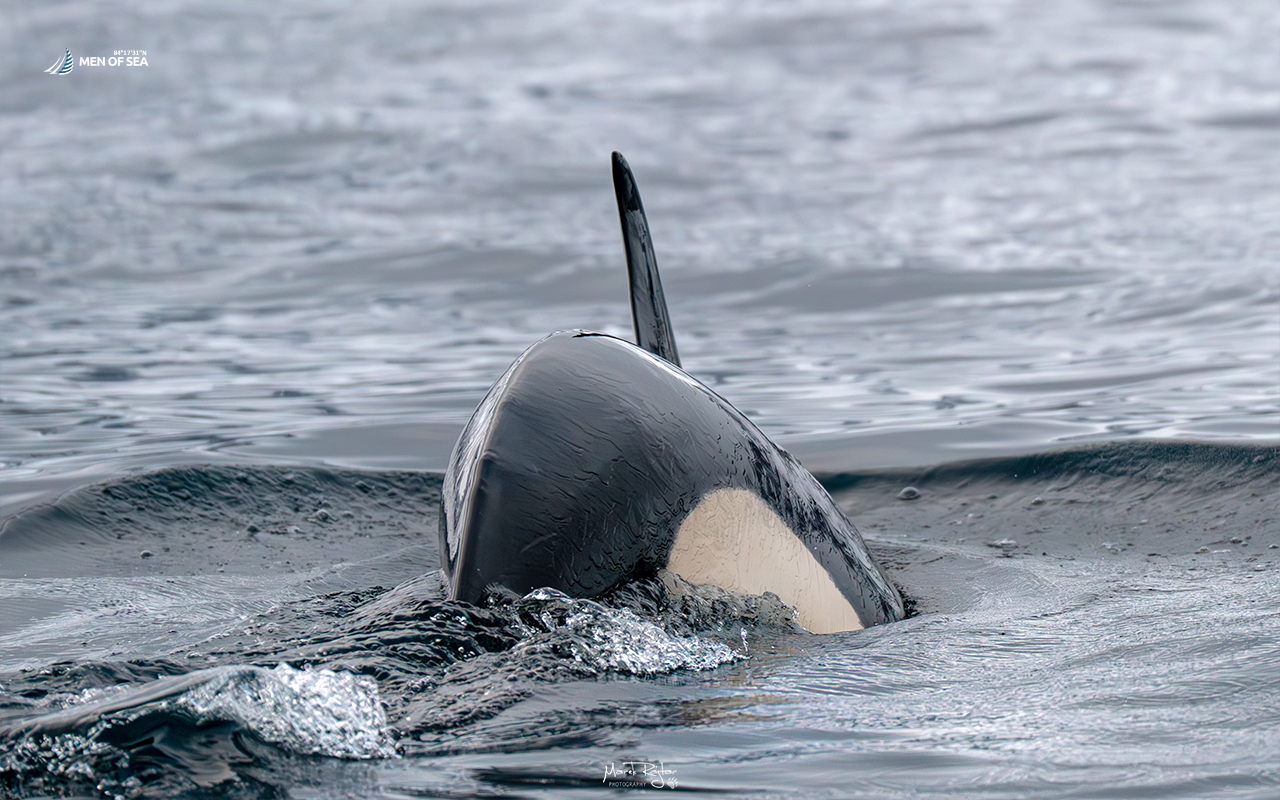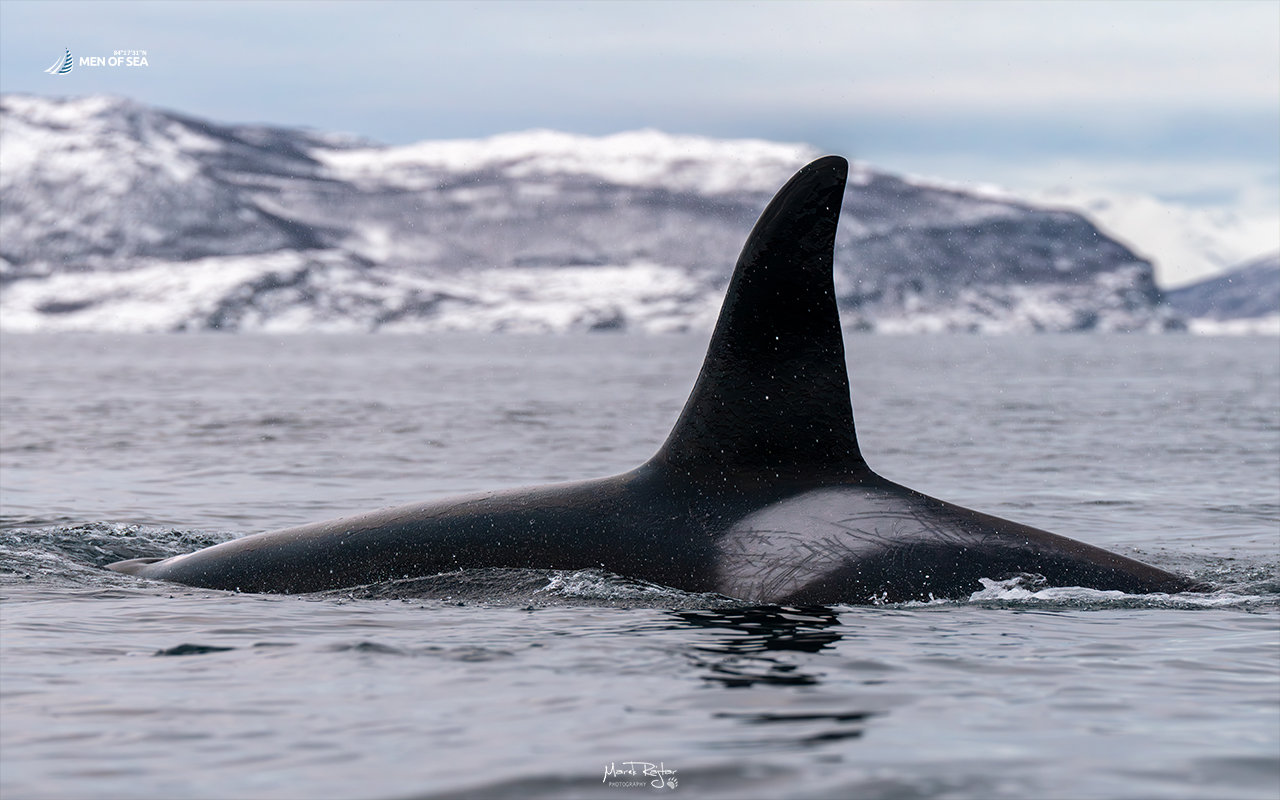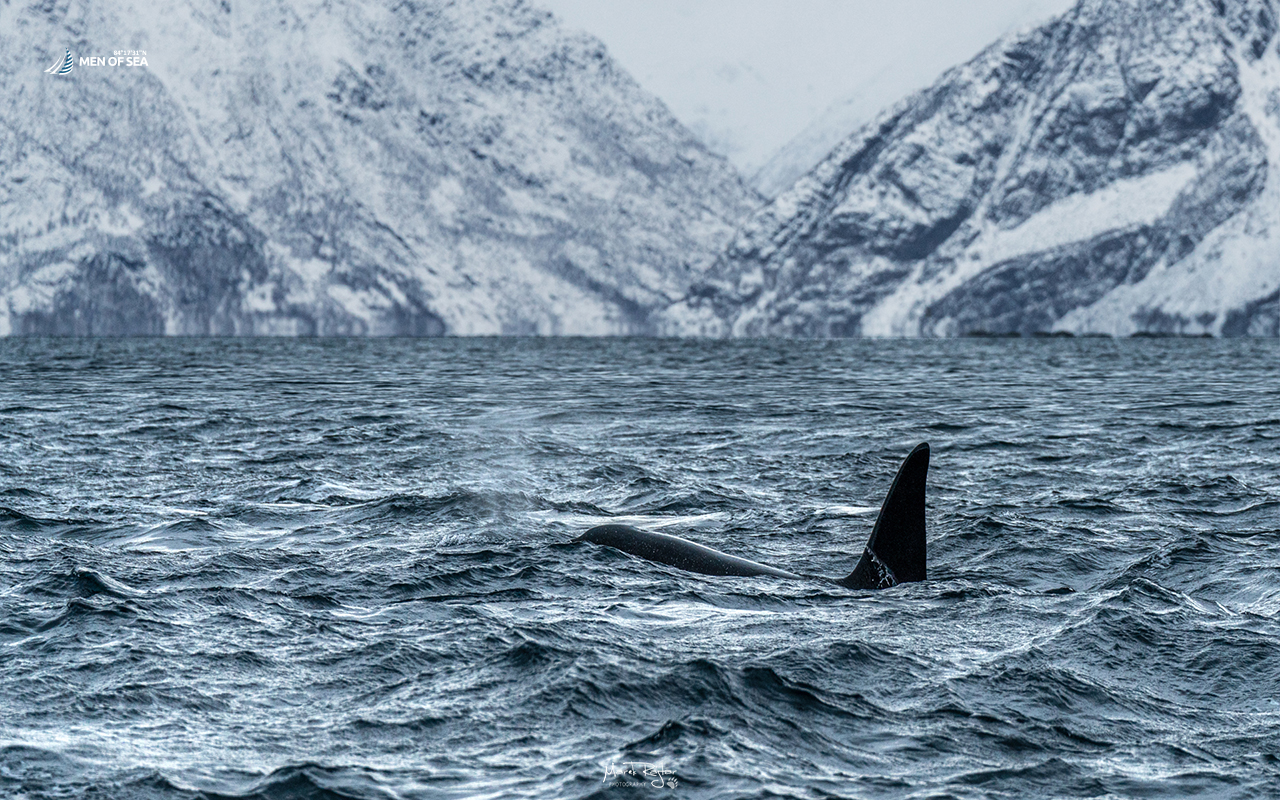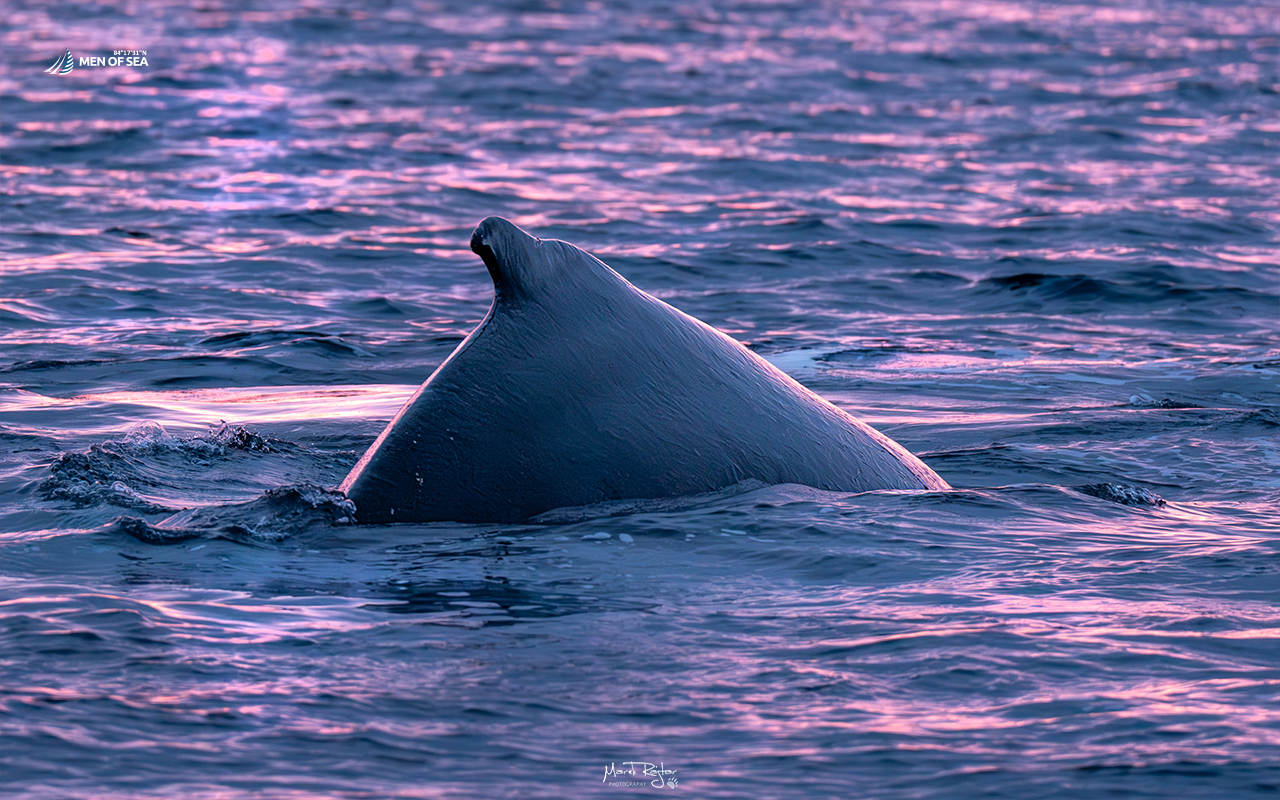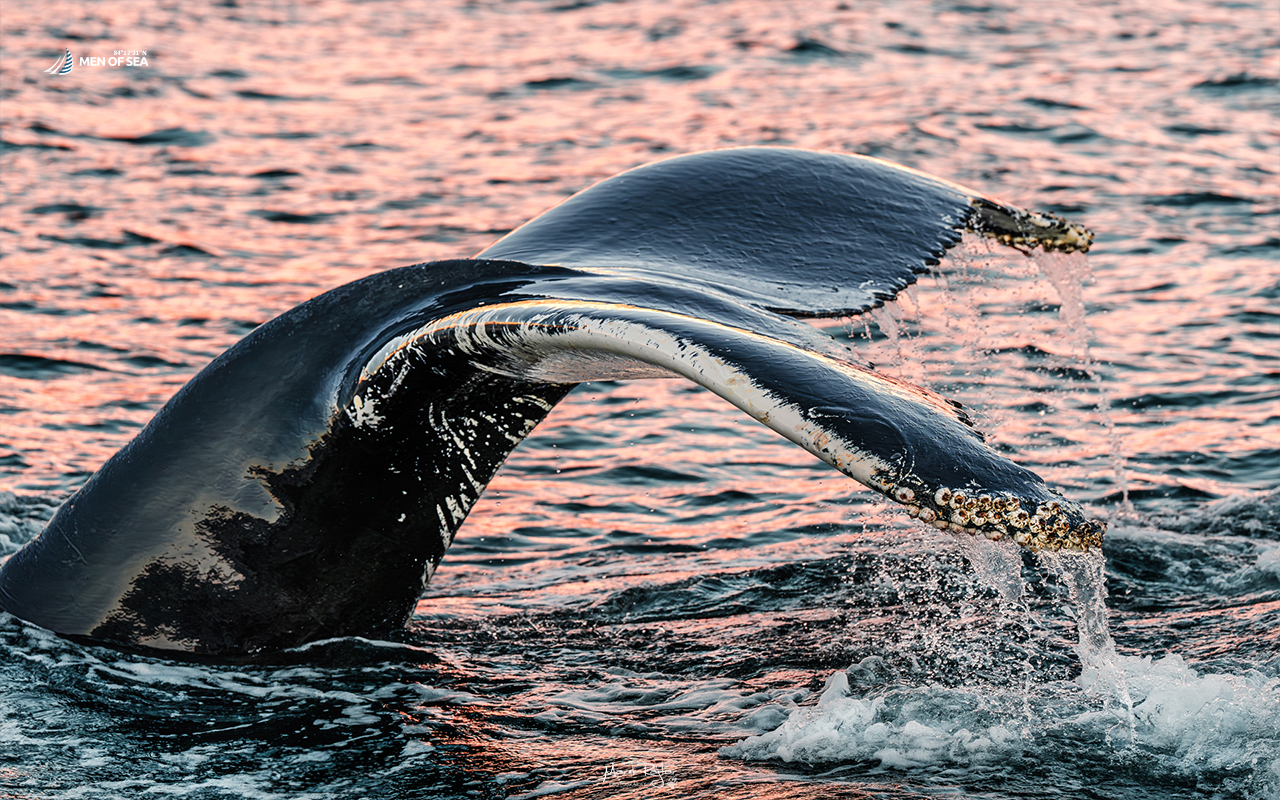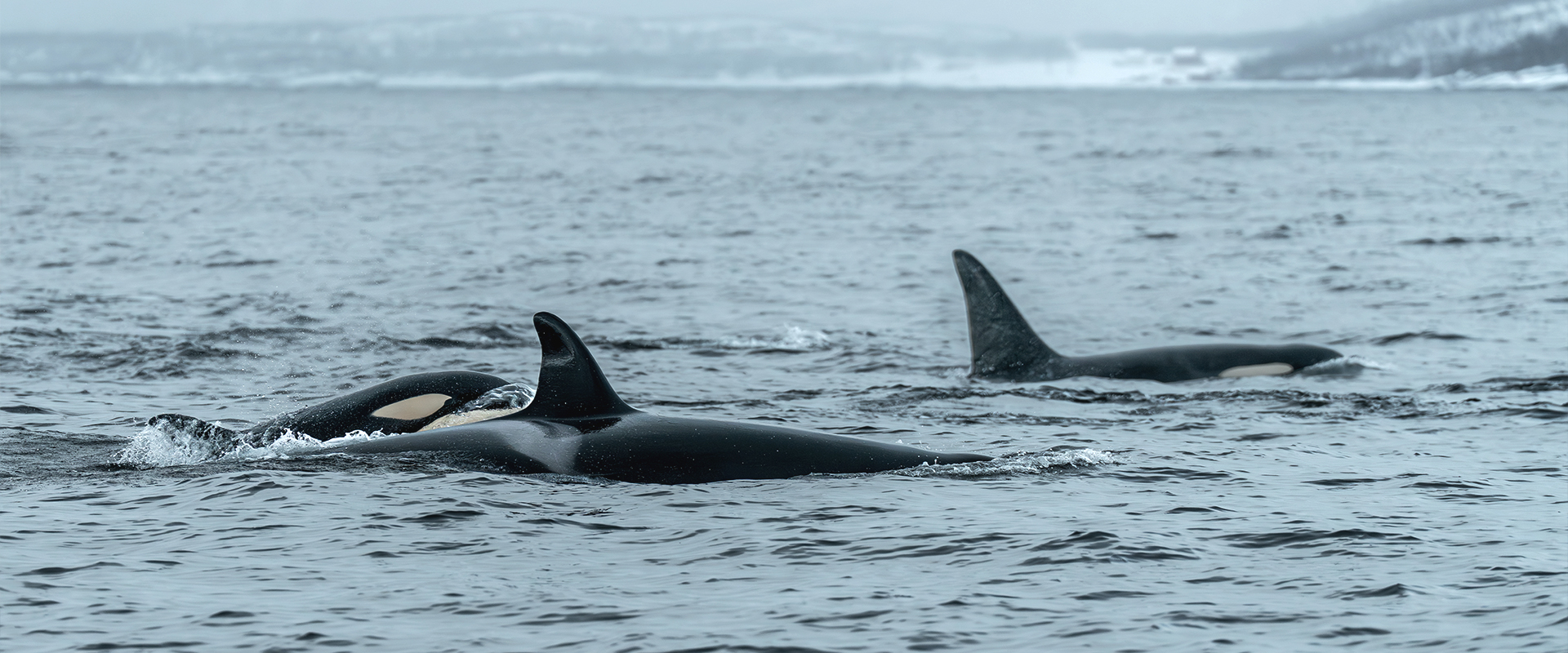
SKJERVØY
Miejsce spotkań orek
BASIC INFORMATION
Skjervøy is a typical fishing village situated on an island and the name for the municipality in the Troms region, northwest of Tromsø. It is a fantastic location for outdoor activities. The towering peaks invite mountain excursions and skiing, while the deep fjords offer opportunities for unhindered navigation and fishing.
Together with the neighbouring municipality of Kvænangen, the area has gained sudden popularity since the winter of 2017/2018, which was caused by the unexpected appearance of shoals of herring, attracting groups of killer whales.
FJORDS FULL OF HERRING AND WHALES
Orcas are highly intelligent mammals belonging to the dolphin family. They live in groups ranging from 5 to 40 individuals and feed on fish and other sea mammals. Some have developed sophisticated techniques to successfully hunt whales and seals. In northern Norway, they contentedly follow their favourite prey, herring. In other words, where the herring are, there the orcas will be.
Until around 2011, the primary wintering place for herring in northern Norway were the Tysfjord, Ofotfjord, and Vestfjord fjords. Herring stayed there from mid-October, migrating south to the west coast of Norway by the end of January to spawn. In summer, they returned further north to the Norwegian Sea. However, during one winter, their plans changed, and for the next five years, they relocated to the Andenes region, Senja Island, and Tromsø. Another change occurred in the winter of 2017/18 when the herring moved even farther north to the Skjervoy and Kvænangen areas, surprising local residents and tourists but not the orcas.
Orcas employ various hunting techniques. When it comes to herring, they use the “carousel technique” – surrounding the shoal and enclosing it with air bubbles. The terrified herring gather in a tight ball. Orcas circle them, disorienting them with their shiny bellies until suddenly, one orca enters the middle and stuns the fish with tail strikes, continuing until all orcas are satisfied.
Other hunting methods include a prolonged chase to tire the prey, e.g. cutting off a whale from the access to the air, creating waves to “flush” the prey from an ice float, pushing fish to the water’s surface, or even beaching themselves to capture their prey.
Trips connected with SKJERVØY
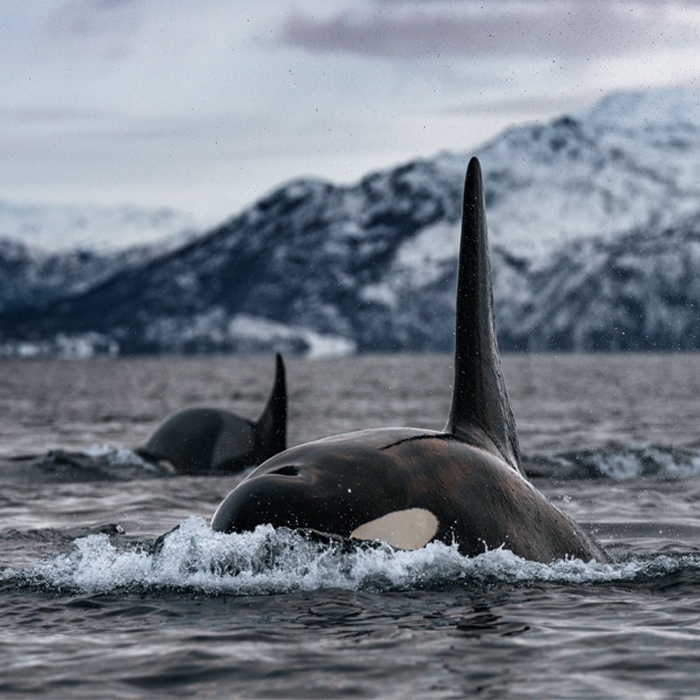
Auroras and Whales 10-days

10 dni
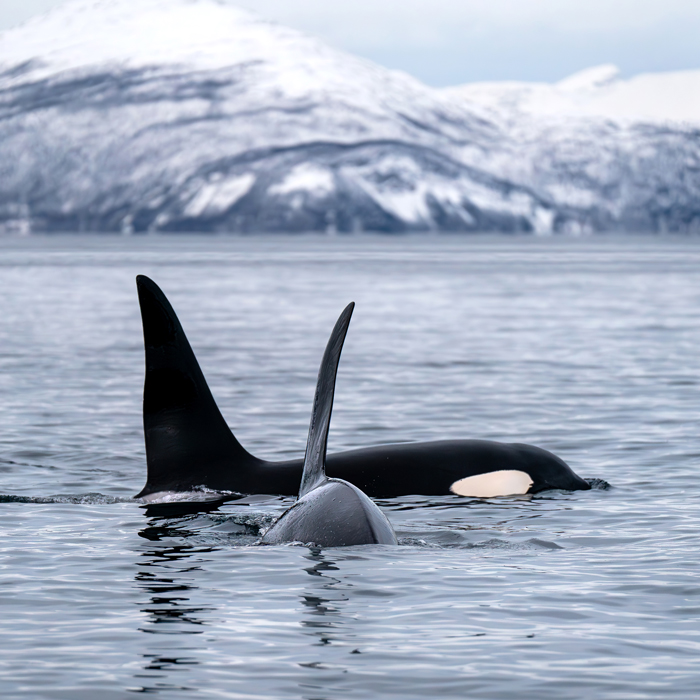
Auroras and Whales #001

8 dni

Auroras and Whales #002

8 dni

Auroras and Whales #004

8 dni

Auroras and Whales #005

8 dni

Auroras and Whales #006

8 dni

Auroras and Whales #007

8 dni

Auroras and Whales #008

8 dni
